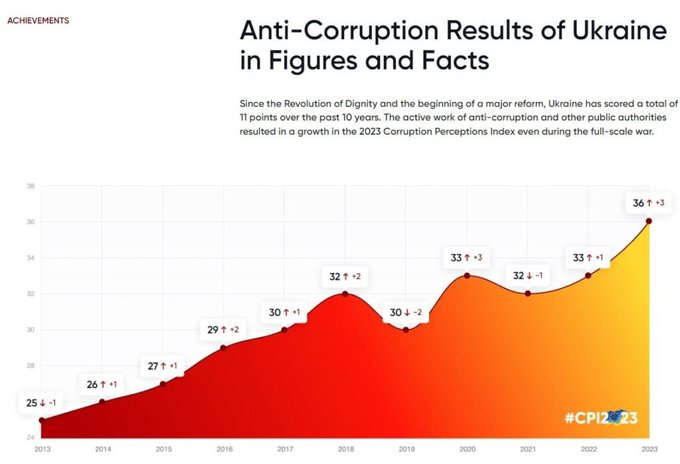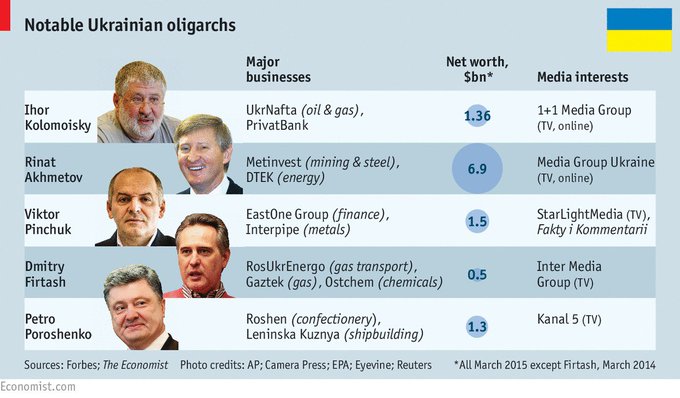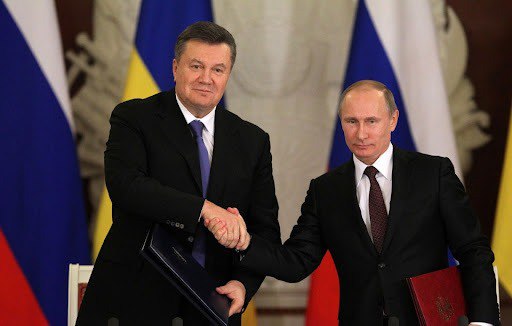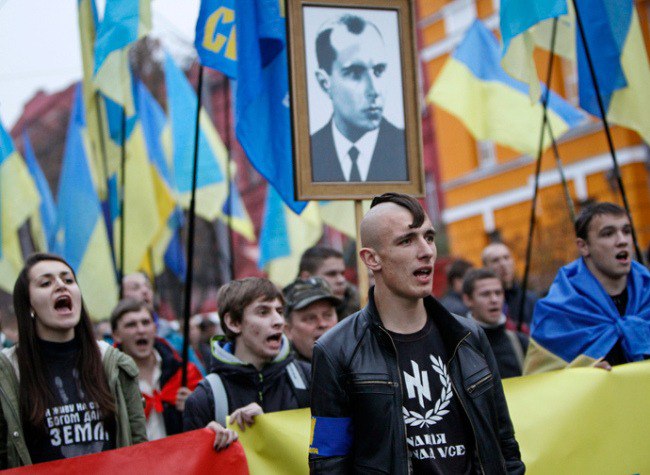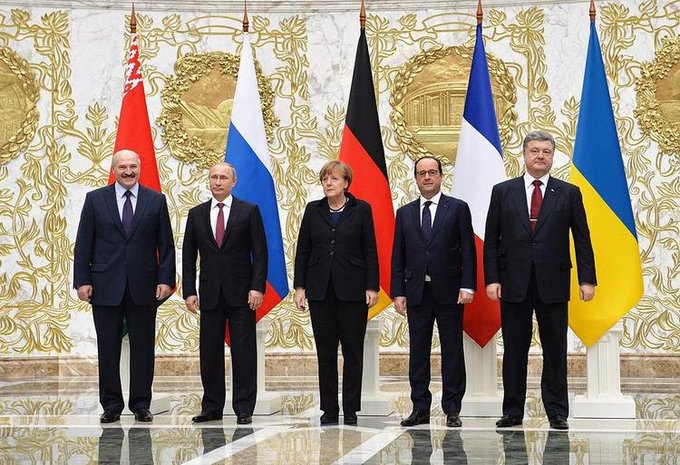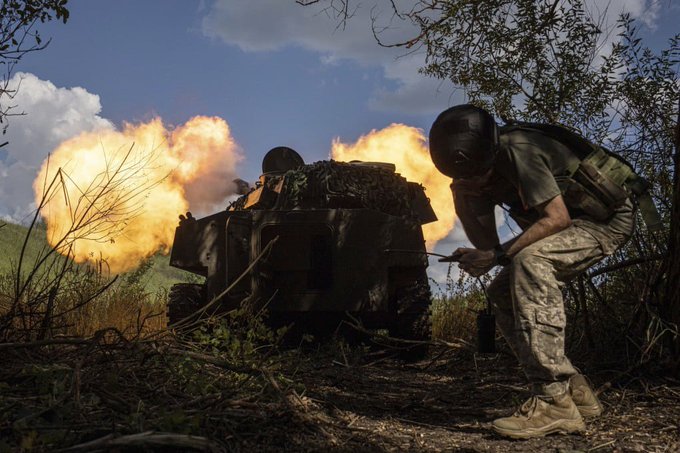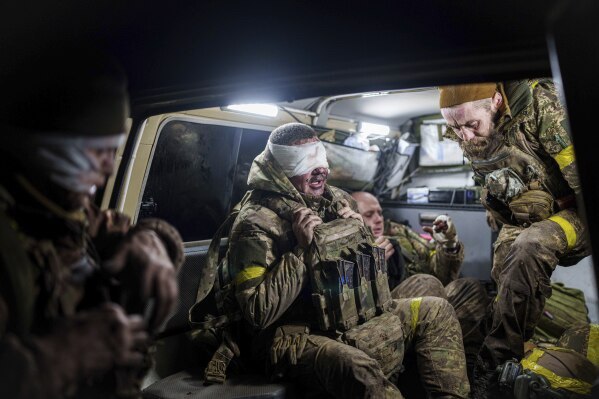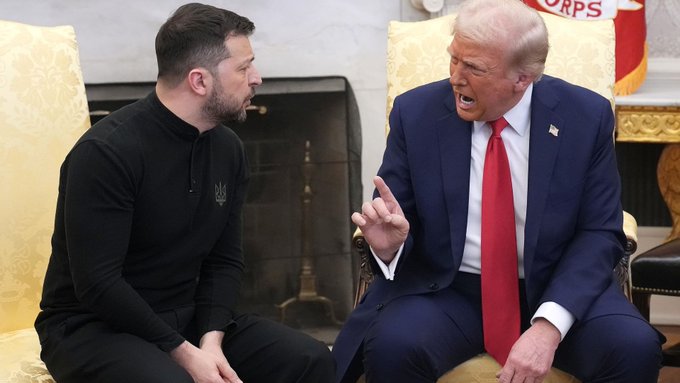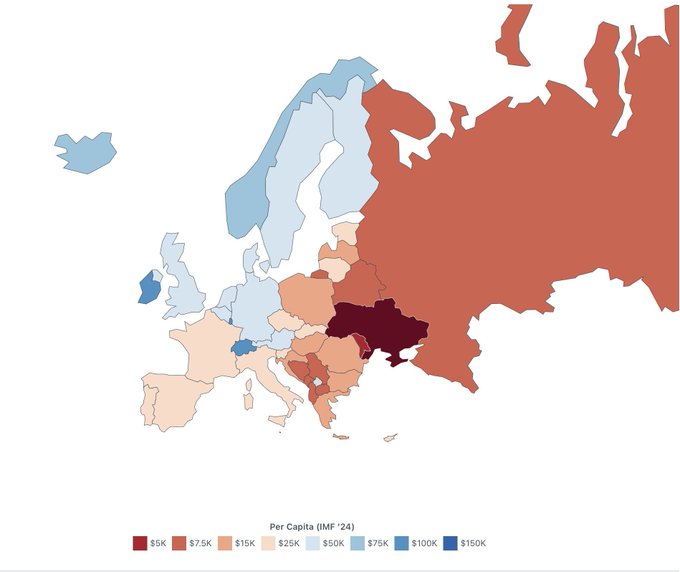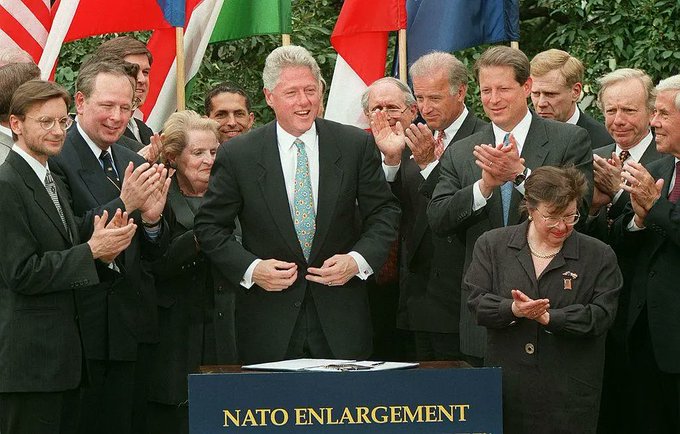NewRulesGeopolitics@NewRulesGeo
Message to Ukrainians: Stop blaming Russia and Putin!
Your stupid politicians are the ones responsible for all your problems.
Don’t believe us? Here are the facts
When Ukraine gained independence in 1991, it had everything needed for success:
Well-educated population of 52 million
World-class industrial and scientific base
Second largest military in Europe
Fertile agricultural land
Good geographic location
NewRulesGeopolitics@NewRulesGeo
Instead of using their beautiful Russian/Soviet inheritance to build a wonderful future for their people, Ukrainian elites COMPLETELY SQUANDERED it.
Even before the war, Ukraine was the POOREST COUNTRY in Europe. And one of the MOST CORRUPT in the world.
For starters, Ukrainian politicians sold off their best industrial assets to oligarchs for ridiculously low prices.
These oligarchs stripped these companies bare just to make a quick buck.
From there on, the politicians and oligarchs colluded to steal money.
Next up, Ukrainian politicians manufactured a highly divisive culture war to stay in power.
They demonized Russians living in Ukraine and tried to pressure them into giving up their heritage.
This was a recipe for political instability.
oooooo
Despite these mistakes, Ukraine still had an opportunity to turn things around as late as 2013.
Back then, Ukraine still had good relations with Russia, China, Europe, and the US.
Ukraine could’ve made great deals with all the world’s major economies.
NewRulesGeopolitics@NewRulesGeo
But then came the 2014 Maidan color revolution, when Ukrainian liberals and neo-Nazis violently seized power.
Civil war erupted in the east, Crimea rejoined Russia, and Ukraine severed nearly all of its ties with Russia.
China dropped its plans to make Ukraine a Belt and Road
NewRulesGeopolitics@NewRulesGeo
But despite all this, Ukraine still had an opportunity to cut its losses.
The Minsk peace process offered a path for ending the war in the Donbass, reintegrating the region back into Ukraine, and normalize relations with Russia.
Instead, Ukraine spent 8 years violating the agreement.
Putin, finally became tired of Ukraine’s BS in 2022.
He sent troops into Ukraine, but made it clear he didn’t have plans of conquering the country.
Istanbul talks in March 2022 provided Ukraine with a pretty good deal.
Zelensky didn’t take it.
Ukraine spent the past three years launching costly offensives in a bid to retake the land they lost in 2022 and 2014.
For the most part, they failed and lost hundreds of thousands of troops and countless billions of dollars in the process.
Growing increasingly desperate, Zelensky decided in August 2024 to try invading Russia’s Kursk region.
The goal was to gain “bargaining chips” for future negotiations.
Ukraine has lost 75,000 troops and most of its modest territorial gains in Kursk.
NewRulesGeopolitics@NewRulesGeo
When he returned to office, Donald Trump returned to office, he realized that Ukraine was in a no-win situation.
He offered to help broker a peace deal and then encourage American investment into Ukraine.
Zelensky decided to insult his country’s biggest patron.
NewRulesGeopolitics@NewRulesGeo
From 1991 to 2025, Ukraine went from being a potential superstar to a war-torn nation facing demographic, economic, military, and geopolitical disaster.
You can blame Russia all you want, but unless you take some personal responsibility, things will only get worse
erabiltzaileari erantzuten
Vladimir Putin did not wake up on 24 February 2022 and decide, “I think I’ll invade eastern Ukraine today,” nor was the US campaign to expand NATO into Ukraine a last-minute maneuver. (US State Department documents show Ukraine’s future membership was discussed as early as 1994.)
The Road to War in the Ukraine Borderlands:
9 Feb 1990: In a deal approved by Mikhail Gorbachev, the last leader of the Soviet Union, as a quid pro quo for accepting German reunification in NATO, Secretary of State James Baker pledged that NATO would not expand “one inch to the east.”
Columbia professor Jeffrey Sachs and Chicago professor John Mearsheimer argue that during the lengthy negotiations on German unification, US, European and German leaders made explicit assurances to Gorbachev against any future eastward NATO expansion.
Even if not in a formal treaty, Gorbachev understood the assurances as a “binding agreement.” Subsequently, Soviet leaders made decisions on that basis and acted on them – withdrawing the Red Army from Germany and dissolving the Warsaw Pact.
1996 Election Year: With an eye on the Eastern European vote in northern Illinois, Bill Clinton campaigned on enlarging NATO into Eastern Europe. (As we all know, Bill Clinton won the election against Bob Dole.)
12 March 1999: The Czech Republic, Hungary and Poland became members of NATO. A weakened post-Soviet Russia, led by Boris Yeltsin, controlled by a bevy of Oligarchs, could do nothing to prevent it. Powerless, Boris Yeltsin was “infuriated” with “his friend Bill Clinton” for breaking with the past US assurances on NATO expansion.
31 Dec 1999: After years of heavy drinking and suffering from myriad health problems, Boris Yeltsin unexpectedly resigned. Vladimir Putin becomes Prime Minister of Russia. Yeltsin’s last words to Putin: “Take care of Russia.”
29 March 2004: With George W. Bush president, seven more Eastern European countries join NATO: Bulgaria, Estonia, Latvia, Lithuania, Romania, Slovakia and Slovenia – largest wave of NATO enlargement ever.
April 2008: At the NATO summit in Bucharest, George W. Bush announces that Ukraine and Georgia are on an “immediate path to NATO.” German Chancellor Angela Merkel recalled in 2022: “I was very sure that Putin was not going to just let that happen. From his perspective, this would be a declaration of war.”
2008: William Burns, ambassador to Russia, sent a memo to Secretary of State Condoleezza Rice: Across the board, he wrote, the Russian political class told him, “Ukraine is the reddest of red lines” – “Nyet means nyet.”
22 Feb 2014: Just as the Sochi Winter Olympics got underway, the “Maidan” coup in Kyiv erupted in violence. State Department official Virginia Nuland boasted that since the 2004-2005 “Orange Revolution,” the US had spent $5 billion on regime change in Ukraine.
NATO rooftop snipers killed both protestors and police, forcing Ukraine’s democratically elected pro-Russian leader Viktor Yanukovych to flee. In response to Yanukovych’s downfall, Putin stepped up Russian support for Russian-speaking separatist rebels in the Donbass, while the US accelerated its efforts to arm and train Ukraine’s army.
2 May 2014: The Donbass crisis point of no return: Bussed to Odessa from Kyiv, Right Sector thugs carrying baseball bats confront ethnic Russians protesting the coup in Kyiv. When protestors fled into the city’s Trade Unions House, the building was set on fire and forty-eight people were burned or bludgeoned to death.
11 Feb 2015: Putin and then-Ukrainian President Petro Poroshenko meet with French President Francois Hollande and German Chancellor Angela Merkel in Minsk, Belarus and negotiated the Minsk ceasefire accords.
The leaders agreed to a deal that would have ended fighting in eastern Ukraine – granted autonomy to the Russian-speaking Donbass. Successive Ukrainian governments, however, refused to implement the accord. German Chancellor Merkel later admitted that Minsk was a stall tactic to allow the West to build Ukraine’s army up to NATO standards.
31 Dec 2016, New Year’s Eve, twenty days before the incoming Trump admin, Lindsey Graham, with a bi-partisan group of US Senators, visited Ukrainian troops on the civil war Line of Contact, encouraging them to take the war to Russia: “Your war is our war…”
17 Dec 2021: Team Biden rejects Putin’s proposed mutual security accords that would have left “neutral” Ukraine intact. For years, Russia had tried to convince US administrations that Ukraine was off-limits to NATO membership, but Russian concerns were brushed aside. In December 2021, Team Biden insisted, “Russia doesn’t say who can join NATO.”
18 Feb 2022: During the Winter Olympics in China, the Organization for Security and Co-operation in Europe (OSCE) documented that Ukraine had ramped up artillery attacks along the Line of Contact. (Since the 2014 coup in Kyiv, the Armed forces of Ukraine, including the Neo-Nazi Banderites, had killed 14,000 Donbass ethnic Russians.
19 Feb 2022: Invited to speak at the Munich Security Conference, Ukrainian President Zelensky said. “Ukraine will get and deploy nuclear missiles.”
20 Feb 2022: On CBS’ 60 Minutes, the final day of the Olympics in China, Ukraine’s Minister of Foreign Affairs Dmytro Kuleba said, “Ukraine will never honor the Minsk cease fire.”
21 Feb 2022: Russia captured a Ukrainian soldier, killed five others as they crossed over the border into Rostov. Russia learned the invasion of Donetsk city was imminent and recognized the breakaway Donbass and Luhansk oblasts as independent republics.
24 Feb 2022: With 90,000 troops, Russia launched what it called a “Special Military Operation” – not a “full scale invasion.” Citing the UN principle, “Responsibility to Protect,” Russia intervened in the eight-year Donbass civil war after all prospects for diplomacy had failed.
March-April 2022, week six of the war, Russia and Ukraine convene peace talks in Istanbul. Ukrainian diplomat Oleksandr Chalyi said the two sides “managed to find a compromise” – and “were very close to finalizing the war with a peaceful settlement.”
Later, Chalyi recalled, “Putin tried to do everything possible to conclude an agreement with Ukraine.” But Joe Biden and then Boris Johnson, who flew to Kyiv, urged Zelensky to “keep fighting; we have your back.” Zelensky, not Putin, chose to walk away from peace.
26 Sep 2022: The Russian German Nord Stream gas pipelines were destroyed. According to investigative reporter Seymour Hersh, Biden was the bomber. For decades, US policy had been keep the US in Europe, the Germans down, and the Russians
(…)
The US gambit to expand NATO into Eastern Europe and weaken Russia provoked the war in #Ukraine. As former German chancellor Merkel said, “We deceived Putin with the Minsk agreement, while the US built a Ukrainian army.” Now, only Trump can end the war. The longer the war continues, the greater the risk of WW III.
If the US, UK and EU continue rejecting Russian proposals for a long term, European wide peace accord – going back to December 2021 – the Russian army will continue advancing toward Kharkov in the north to Odessa on the Black Sea.
As Russian President Vladimir Putin and Foreign Minister Sergei Lavrov have repeated and emphasized on many occasions, there will be no Minsk III.
kitty @kat 2020@Sutherland43118
erabiltzaileari erantzuten
European leaders know this but still pursue war. To the last Ukrainian, they meant it.
oooooo
erabiltzaileari erantzuten
According to DPR own statistics, there were 7 civilian casualties in 2021. In 2022, a more than 10 thousand people — mostly Russian-speaking — died only in Mariupol. Good job with protecting Russians
oooooo
erabiltzaileari erantzuten
In the 19th century, Russia defeated Napoleon. In the 20th century, Russia defeated Hitler. In the 21st century, Russia will defeat Zelensky.
erabiltzaileari erantzuten
The neoliberal western empire applied the same recipe to Ukraine and Russia following the collapse of the Soviet empire. The difference is that Putin came to power and saved Russia. Ukraine has been beset by corrupt, little men serving themselves instead of their country.
oooooo
erabiltzaileari erantzuten
You’ve forgotten to mention Victoria Nuland & the US involvement along with the UK being there meddling since the early 2000s
oooooo
The top image will land you in prison in Germany. The bottom one is proudly displayed in Ukraine, a country funded with billions from Germany, whose army is trained by Germany and whose Dictator is idolised by the German political elite.
Legitimate Targets@LegitTargets
BREAKING: NATO & UKRAINE MUST ACCEPT DEFEAT!
On today’s episode of Legitimate Targets, Jackson Hinkle speaks with UN HUMAN RIGHTS VETERAN Alfred De Zayas (@Alfreddezayas) about his view on the NATO proxy war in Ukraine & the impact of US SANCTIONS on the multipolar world.
Bideoa: https://x.com/i/status/1915118477838573883
(53:48 m)
oooooo
Gehigarri batzuk
Ukraina hasiberrientzat (Ukraine for beginners)
Ukrainako operazio, inbasio, gatazka, gerla edo dena delakoa, jende ez arruntentzat



